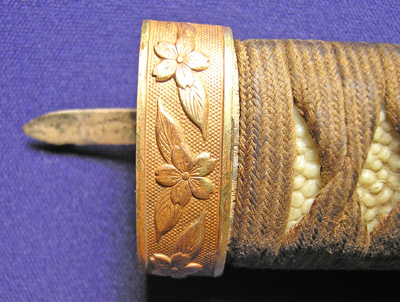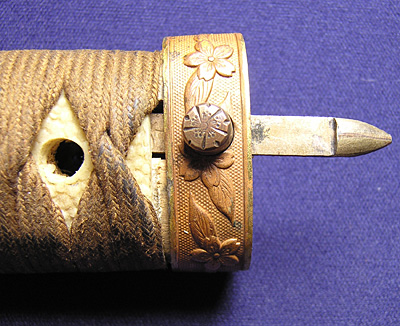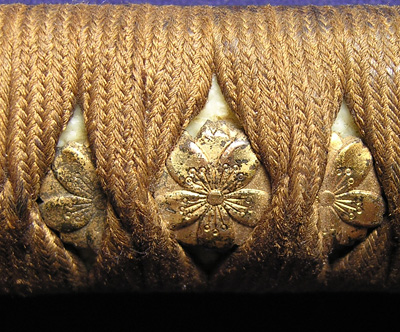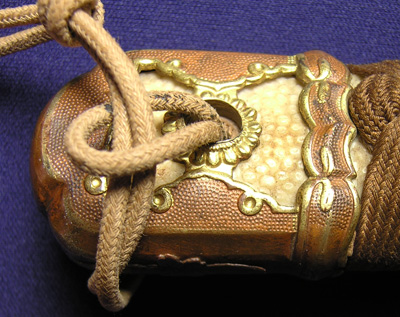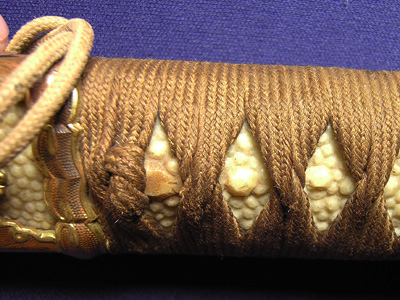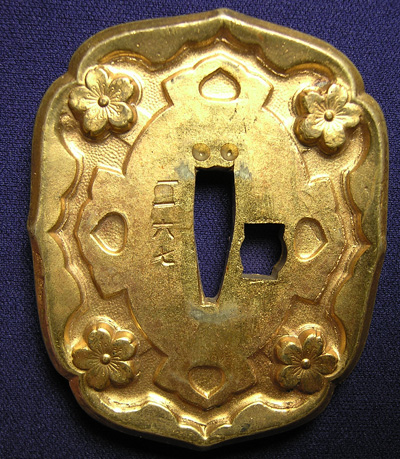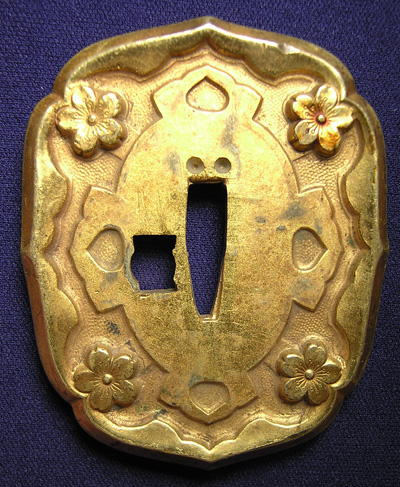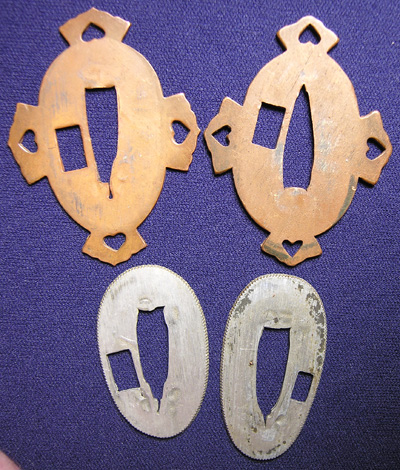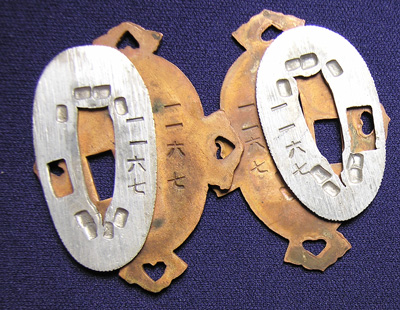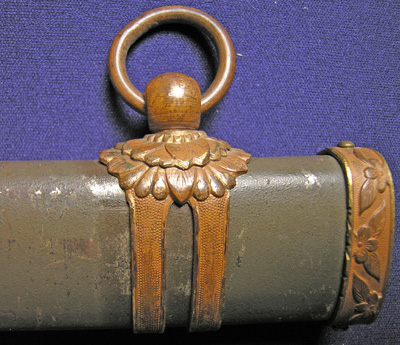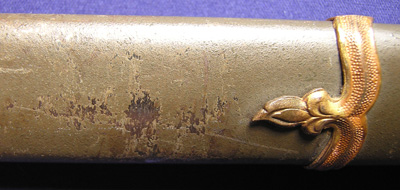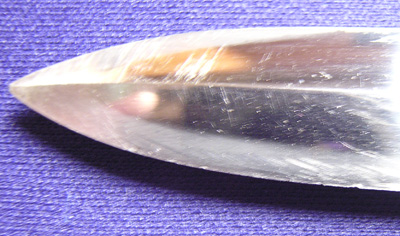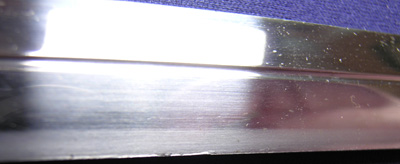Rare Murata-to, Kogarasumaru-to Dress Saber in Shin-Gunto Mounts
Signature: Murata-to, Kanemasa.
Year Made: Meiji Niju Rokunen Nigatsu Hihatchi (1893)
Forging Pattern: Tight masame
Tempering Pattern: Polished on, suguha
Dimensions: Blade Length: 26.75 inchesNakago: 5.875 inches 6 mm thick and 24 mm wide at Hamachi
Mountings: Very good quality '34 Pattern Shin-gunto mounts in good condition, matching numbers, no dents and little paint loss on the saya. Handle wrap is dirty but all there and tight. Plating on fittings is very good and has large nodule samé. There is also a fine silver foil covered copper habaki with a "rain" pattern. Very well done and probably part of the original mounts.
Overall Condition: Excellent, Murata-to were swords made by General Murata Tsuneyoshi to supply the military with needed swords for their colonial expansion and growing modern army during the reign of Emperor Meiji. It was basically the first attempt to mass-produce swords for military use where they were now mostly symbolic. This sword was made to go into a form of kyu-gunto or western style saber mountings. The odd shape of the blade is a copy of a famous sword, the Kogarasu-Maru, traditionally the precursor to the Tachi and katana we are familiar with. This sword is very well made but the edge has not been hardened, as it was probably used as part of an officer's or diplomat's dress or parade uniform. It would have been one of Murata's more refined efforts, most likely made by the general himself. There is a similar sword in Fuller and Gregory's Japanese Military and Civil Swords and Dirks, which is shown in mounts used by a senior member of the Imperial Household. It appears to have been artificially tempered as well. The sword is very well made and in excellent condition for a 100+ year old sword. There are some scratches and small (very) dings to the cutting edge but other than that it is new looking (the camera tends to exaggerate the appearance of the scratch due to reflection, in the hand it does not appear scratched at all). The WW II era mounts show signs of use but no major flaw of any kind and the conversion to the then "modern" mounts was done very professionally (surprisingly unusual to have the nakago preserved with intact threads). All in all a great piece of history for both the collector of Japanese swords and the collector of militaria.





